
Moroccan Military Forum alias FAR-MAROC
Royal Moroccan Armed Forces Royal Moroccan Navy Royal Moroccan Air Forces Forces Armées Royales Forces Royales Air Marine Royale Marocaine
|
|
| | JSF F-35 Lightning II |  |
|
+52Anzarane Adam elite17 Bruce Wayne mr.f-15 Eagle RecepIvedik BOUBOU TYBBND4 FAR SOLDIER mbarki_49 youssef_ma73 Anassfra93 moro annabi Chobham yassine1985 juba2 mourad27 jf16 RadOne Inanç PGM osmali leadlord jonas Spadassin docleo farewell charly klan godzavia lida ready GlaivedeSion thierrytigerfan Nano Fahed64 Gémini FAMAS MAATAWI reese Fremo Yakuza Mr.Jad Seguleh I Extreme28 Fox-One Samyadams Harm Viper Northrop rafi 56 participants | |
| Auteur | Message |
|---|
rafi
General de Division

messages : 9496
Inscrit le : 23/09/2007
Localisation : le monde
Nationalité : 
Médailles de mérite :  
 
 

 |  Sujet: JSF F-35 Lightning II Sujet: JSF F-35 Lightning II  Mer 17 Oct 2007 - 17:25 Mer 17 Oct 2007 - 17:25 | |
| Rappel du premier message :
Bonjour à tous,
Le F-35 est l'avenir de beaucoup de forces aériennes, il remplacera les F-16, A-10, Harrier et autres. Je propose que soient postées ici, si vous êtres d'accord, toutes les infos au sujet du F-35. Merci de m'avoir lu.
Article (en anglais) fort intéressant sur l'avion qui comprend un pdf avec les différents armements que pourra emporter le F-35, tant en soutes, que sous les ailes. Furtif, moins furtif...
http://www.codeonemagazine.com/archives/2007/articles/apr_07/lightningstrike/index.html
Dans cet autre article, une image montre qu'il serait aussi possible de rajouter de l'armement en bout d'aile, info, intox?
http://www.codeonemagazine.com/archives/2002/articles/arp_02/jsf/index.html
Rafi
Dernière édition par le Dim 2 Déc 2007 - 16:06, édité 3 fois | |
|   | |
| Auteur | Message |
|---|
Fremo
Administrateur

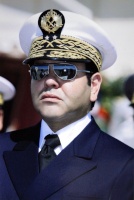
messages : 24818
Inscrit le : 14/02/2009
Localisation : 7Seas
Nationalité : 
Médailles de mérite :  
 

 |  Sujet: Re: JSF F-35 Lightning II Sujet: Re: JSF F-35 Lightning II  Dim 17 Jan 2010 - 14:37 Dim 17 Jan 2010 - 14:37 | |
| Tiens, la Navy commence aussi à se demaner si le F35 est le bon cheval. On commence à s'apercevoir un peu partout (A400M, F35, NH90...) que de développer x versions d'un même appareil pour satisfaire tous les utilisateurs est surtout générateur de coûts. Jusqu'ici, c'était plutôt une maladie européenne. Elle commence à toucher les US. - Citation :
| JSF - Navy Ready To Abandon Ship?
|
The Navy is not happy with the new joint-service fighter. It's gained weight during development, but more importantly, the Navy isn't sure that the capabilities it provides are what they want to spend more money on. It's tempting to scrap it and go with an alternative, from a company with recent carrier-jet experience. The obstacle is a headstrong Secretary of Defense who's staked his reputation on the joint program, but the signals are clear: the moment he's gone the Navy's going to bail.
Enough about the F-111. What about JSF?
For the service of "loose lips sink ships", the Navy leaked the blandly titled "Joint Programs TOC Affordability" document through more holes than IJN Yamato off Okinawa. This was no baby-seals-type accident. It's a deliberate hit at the highest level.
The key chart is page 10, which shows that - over the lifetime of the fleet - the carrier-based and STOVL JSF versions will cost the Navy 40 per cent more, in total operating costs, than the F/A-18C/Ds and AV-8Bs that they replace. (The older aircraft costs are taken from FY2008 and include a lot of aging-aircraft issues.) This is despite a smaller fleet and fewer flight hours: the new aircraft are expected to cost more than 60 per cent more to fly per hour than their predecessors.
The Navy report suggests that the total cost of the Pentagon's JSF program will be $705 billion in FY2002 dollars, just over twice the figure predicted at the program's inception.
Lockheed Martin and the JSF program office will respond that the Navy figures are conjectural, based on experience with legacy aircraft, and not applicable to the JSF's cutting-edge technology. This matters not a hoot. What matters is that the admirals and senior Navy leaders believe the report is roughly accurate, or it wouldn't be on the street in the first place.
So where are all those billions in extra O&S money going to come from? The answer is "nowhere". When the report states that "JSF will have a significant impact on naval aviation affordability", what it means by "significant" is "about the same as the ten torpedo and seven bomb hits on Yamato."
But wait - there's more. The Navy is not talking exclusively about the F-35B/C. If similar TOC comparisons hold for the F-16, USAF TacAir plans have some challenges ahead. Moreover, the Navy notes an "upward" pressure on the $705 billion - indicating that the program team will be doing well to hold it level.
The Navy is the only US JSF customer with a ready Plan B, in the shape of the Super Hornet. (And GE has developed a thrust boost for the F414 and Boeing has muttered quietly about stealth enhancements.) What would the Navy do about the Marines? That wasn't in the report's terms of reference.
The Navy is not identifying factors behind the per-hour TOC number. However, the JSF is Super Hornet-sized, and bigger than either of the aircraft it replaces. The F-35B includes a complex lift-system full of critical components. And JSF includes stealth technology, which has yet to prove as affordable in service as the engineers promised it would be.
No one presentation or study is definitive, but this latest disclosure places more pressure than ever on the JSF program to perform.
AW _________________  | |
|   | | reese
Colonel


messages : 1646
Inscrit le : 10/05/2009
Localisation : alger
Nationalité : 
Médailles de mérite :  

 |  Sujet: Re: JSF F-35 Lightning II Sujet: Re: JSF F-35 Lightning II  Dim 17 Jan 2010 - 14:54 Dim 17 Jan 2010 - 14:54 | |
| l US Navy n a jamais reellement supporté le JSF contrairement a l USMC . Les amiraux voulaient un gros batch de Super-Hornet a la place mais elle s est faite forcer la main | |
|   | | Invité
Invité
 |  Sujet: Re: JSF F-35 Lightning II Sujet: Re: JSF F-35 Lightning II  Dim 17 Jan 2010 - 19:50 Dim 17 Jan 2010 - 19:50 | |
| - Fremo a écrit:
- Tiens, la Navy commence aussi à se demaner si le F35 est le bon cheval. On commence à s'apercevoir un peu partout (A400M, F35, NH90...) que de développer x versions d'un même appareil pour satisfaire tous les utilisateurs est surtout générateur de coûts. Jusqu'ici, c'était plutôt une maladie européenne. Elle commence à toucher les US.
La Navy a depuis toujours était contre le JSF et en faveur du F-18 E/F blk II, ce n'est pas nouveau fremo, ils ont même pensé à un certains moment à développer une version blk III du super Hornet en partenariat avec l'Australie, avec TVC, 20% de poussée suplémentaire, RCS améliorée (peut être même des soutes à armement), boeing parle de la génération 4,75  (quiserait tellement performante que pas la peine de commander des 5th gen comme le JSF et économiser les sous pour concevoir un nouvel avion 6th gen  ) Tel est l'argument de vente de Boeing, mais ce projet a été abandonné au profit du F-15SE.
Dernière édition par Raptor le Jeu 21 Jan 2010 - 23:24, édité 1 fois |
|   | | MAATAWI
Modérateur

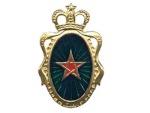
messages : 14756
Inscrit le : 07/09/2009
Localisation : Maroc
Nationalité : 
Médailles de mérite :
 
 
 
 |  Sujet: Re: JSF F-35 Lightning II Sujet: Re: JSF F-35 Lightning II  Jeu 21 Jan 2010 - 12:57 Jeu 21 Jan 2010 - 12:57 | |
| 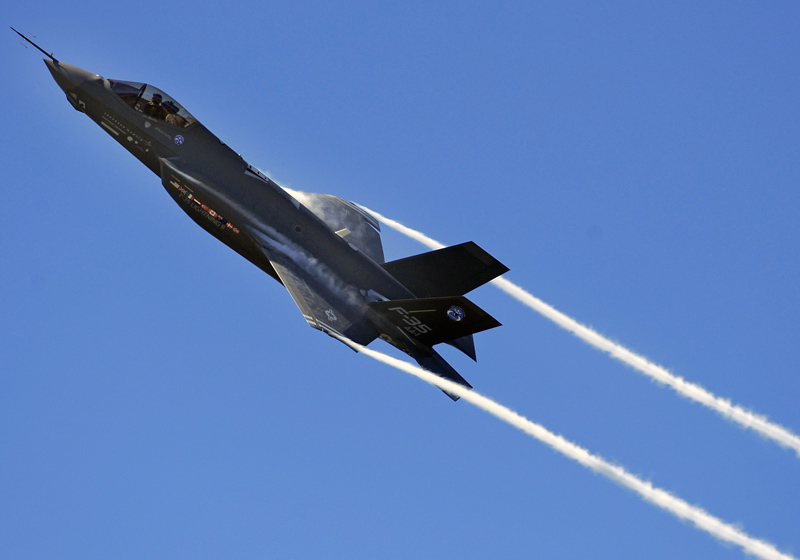 - Citation :
AF chief: F-35 testing, acquisition will slow
The Pentagon is slowing down testing and acquisition of the F-35 Joint Strike Fighter, Air Force Chief of Staff Gen. Norton Schwartz acknowledged Wednesday.
“The path we were on was too aggressive, so there’s an effort underway to reduce concurrency, to lengthen the period associated with testing, to increase the number of test assets and make the production rate somewhat less ambitious,” Schwartz said during a briefing with reporters in Washington.
The F-35 will be ready for initial operational capability with the Air Force in 2013, Schwartz said.
“While it would have been ideal to go without adjustment, there are very few programs of this sophistication that I’m aware of that have not required some adjustment,” said Schwartz. “This is in the larger interest of the larger attack community that will rely on” the jet.
He said the adjustment is meant to ensure that large numbers of F-35s can be built problem-free when it comes time to replace U.S. and allied fighter fleets toward the end of the decade.
Schwartz added that he did not think the jet was going to breach the Nunn-McCurdy statute’s limits on cost growth in weapon programs.
His comments come a week after a leaked Navy analysis document said the F-35 would be considerably more expensive to operate than the Navy and Marine Corps’ current tactical fighters.
“I have not yet had an opportunity to validate for myself the accuracy of that analysis,” Schwartz said, adding that he did not accept the findings of this analysis “at face value.”
Still, he said he acknowledged that operating costs are a serious issue, and that he would be troubled if the analysis turns out to be accurate.
“If there are issues related to cost of operations, we’ll find remedies and mitigations; we have to,” he said.
Many have said that the Pentagon has no choice but to make sure the F-35 program succeeds since the existing U.S. fighter fleet is rapidly closing in on its retirement date.
source:www.navytimes.com | |
|   | | MAATAWI
Modérateur


messages : 14756
Inscrit le : 07/09/2009
Localisation : Maroc
Nationalité : 
Médailles de mérite :
 
 
 
 |  Sujet: Re: JSF F-35 Lightning II Sujet: Re: JSF F-35 Lightning II  Ven 22 Jan 2010 - 11:39 Ven 22 Jan 2010 - 11:39 | |
| - Citation :
Pentagon underscores commitment to F-35
WASHINGTON, Jan 21 (Reuters) - Deputy Defense Secretary William Lynn on Thursday underscored the Pentagon's commitment to Lockheed Martin Corp's (LMT.N) $300 billion F-35 fighter jet, saying the U.S. government and its allies still planned to buy 3,000 of the new fighters over time.
"We are heavily investing in the F-35. A successful Joint Strike Fighter is at the heart of our continued air superiority," Lynn told industry and military officials at a conference hosted by Tufts University and the Institute for Foreign Policy Analysis.
Draft budget documents obtained by Reuters show the department will request $10.7 billion to continue the F-35's development and buy 42 aircraft in fiscal year 2011, 10 less than initially planned.
The Pentagon "has adjusted F-35 procurement quantities based on new data on costs and on likely orders from our foreign nations partners and realigned development and test schedules," the document said without giving details.
Lynn, speaking to reporters after his speech, acknowledged the program had run into some problems typical of large new weapons programs, but said the department was implementing steps to bring the program back "in line."
He said there was no plan to halt work on any of the three variants of the radar-evading new fighter jet. "There's no thinking of changing that kind of fundamental," he said.
Asked if the program could breach cost thresholds that would trigger a notification to Congress and a life-or-death program review, Lynn said Pentagon officials would address that issue next week.
He said he was aware of reports that Britain could halve its proposed buy of F-35 fighters for an aircraft carrier due to rising unit costs and increased budget pressures, but said the British had not yet made a final decision on the issue.
Lynn said he did not anticipate that any such cuts would increase the unit cost of the new fighters and undermine its business case as a relatively low cost replacement for Lockheed's F-16 and 12 other warplanes.
"There's always going to be puts and takes on orders. I think the fundamental core of the buy is still there -- it's going to be several thousands purchased," Lynn said. "I don't think there's a threat there right now."
A senior Pentagon official told Reuters in November that a "couple" of unnamed co-development partners were delaying planned purchases of the jet, a move that will boost initial prices of the costliest ever U.S. arms purchase.
Eight international partners have co-financed the F-35: Britain, Italy, the Netherlands, Turkey, Canada, Australia, Denmark and Norway.
Northrop Grumman Corp (NOC.N) and Britain's BAE Systems (BAES.L) are Lockheed's key subcontractors on the new fighter. source:www.reuters.com | |
|   | | FAMAS
Modérateur

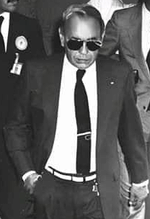
messages : 7470
Inscrit le : 12/09/2009
Localisation : Zone sud
Nationalité : 
Médailles de mérite :  

 |  Sujet: Re: JSF F-35 Lightning II Sujet: Re: JSF F-35 Lightning II  Sam 30 Jan 2010 - 17:34 Sam 30 Jan 2010 - 17:34 | |
| - Citation :
- Lockheed Strengthening Fuselage in Navy’s F-35 Model
Lockheed Strengthening Fuselage in Navy’s F-35 Model (Update2)
Share Business ExchangeTwitterFacebook| Email | Print | A A A By Tony Capaccio
Jan. 29 (Bloomberg) -- Lockheed Martin Corp. is fixing a structural weakness in the Navy version of the F-35 Joint Strike Fighter that limits the jet’s ability to launch from aircraft carriers, according to a company spokesman.
Engineers in July discovered a “strength shortfall” in an aluminum structure in the aircraft’s center fuselage that helps absorb stresses during a catapult takeoff, Lockheed spokesman John Kent said today in an e-mailed statement.
“U.S. Navy and program office engineers were apprised immediately and have been directly involved in approving design updates,” Kent said. “A modification is already approved and ready to incorporate early this year prior to any catapult testing planned for 2011.”
The modification doesn’t affect the aircraft’s progress toward first flight and is expected to have “little or no impact” on the plane’s shipboard testing, he said.
“There was never a problem with landing -- only catapult launch,” Kent said.
Bethesda, Maryland-based Lockheed plans to build the fighters in three variants for the U.S. Air Force, Navy and Marine Corps. The current estimated cost is $298 billion.
The carrier version is the last of the three variants to go into operation and is scheduled to be used on carriers operating with Boeing F/A-18E/F fighters by 2015. The first development model is scheduled for its maiden flight by August 30, Kent said.
Ashton Carter, the Pentagon’s chief weapons buyer, and Michael Gilmore, director of operational test and evaluation, declined to comment through Pentagon spokeswoman Cheryl Irwin.
Pentagon Report
The issue wasn’t disclosed in Gilmore’s annual’s report released last week. That report said F-35 testing so far raised concerns that engine blasts from the carrier model and Marine Corps short-takeoff and vertical-landing versions could cause deck damage and injure personnel.
The F-35 is the Pentagon’s largest weapons program. The fiscal 2011 defense budget set for release Feb. 1 requests 42 fighters, up from 30 this year. As many as 20 jets are Navy and Marine Corp versions.
Kent said all design changes to strengthen the center fuselage will be incorporated before parts are made for the first production F-35Cs in the fourth initial production contract now under negotiation for 30 aircraft.
This is only a development-phase issue “and a minor one at that,” Kent said. “This is part of our normal airframe development process, and is not a concern for the Navy.”
Cheryl Limrick, a spokesman for F-35 military program manager Marine Corp. Major General David Heinz, didn’t return an e-mail seeking comment today.
The Navy plans to buy as many as 680 carrier and short-take- off versions of 2,456 planned jets.
Deck Damage
The Pentagon’s Gilmore said in his report that the engine and power-systems’ exhaust on the Navy and Marine versions is powerful enough to pose a threat to carrier personnel. The blasts also may damage shields used to deflect heat on the deck, including on the CVN-21 carrier, the Navy’s most expensive warship.
“Early analyses of findings indicate that integration of the F-35 into the CVN-21 will result in damage to the carrier deck environment and will adversely affect hangar deck operations,” Gilmore wrote.
The Navy model’s exhaust area is larger than the Boeing planes’, making the jet-blast deflectors used during launch “vulnerable to warping and failure,” he wrote.
Exhaust from the Marine Corp version’s integrated power system deflect downward and may be “a hazard to flight deck refueling, munitions, personnel and equipment” located on catwalks, the report said.
Lockheed spokesman Chris Giesel said tests conducted with the JSF Program Office and the Navy “are showing positive results regarding compatibility of the F-35’s exhaust with carrier decks and tarmac surfaces. The study will conclude in spring 2010.”
http://www.bloomberg.com/apps/news?pid=20601087&sid=a6gq84TiIFcA&pos=9
_________________
"La stratégie est comme l'eau qui fuit les hauteurs et qui remplit les creux" SunTzu
| |
|   | | MAATAWI
Modérateur


messages : 14756
Inscrit le : 07/09/2009
Localisation : Maroc
Nationalité : 
Médailles de mérite :
 
 
 
 |  Sujet: Re: JSF F-35 Lightning II Sujet: Re: JSF F-35 Lightning II  Mar 2 Fév 2010 - 12:57 Mar 2 Fév 2010 - 12:57 | |
| - Citation :
Chasseur F35: le Pentagone gèle un contrat avec Lockheed Martin
WASHINGTON - Le Pentagone va geler une somme de 614 millions de dollars qu'il devait verser au constructeur aéronautique Lockheed Martin en raison de problèmes et de retards dans le programme F35, un avion de chasse furtif, a annoncé lundi le secrétaire à la Défense Robert Gates.
"Les performances et l'évolution du F35 au cours des deux dernières années n'ont pas été ce qu'elles auraient dû être", a affirmé M. Gates, qui s'exprimait lors d'une conférence de presse pour présenter le nouveau budget du ministère de la Défense.
"Les critères de performance n'ont pas été remplis", a-t-il insisté.
Le F35 est un avion furtif construit par Lockheed Martin pour remplacer à terme les F16.
M. Gates a dit avoir pris cette décision car "remettre sur les rails (l'avion furtif) Joint Strike Fighter ne doit pas reposer entièrement sur les épaules du contribuable". Il a précisé que cette décision avait été prise en accord avec Lockheed Martin.
Mais le Pentagone est coresponsable des mauvais résultats de ce programme et une nouvelle équipe sera nommée pour en prendre la direction, a ajouté M. Gates.
Le F35 représente le programme d'armement le plus coûteux au sein du budget de la Défense, qui totalise 708 milliards de dollars, et les fournisseurs ont à plusieurs reprises échoué à respecter le calendrier et le budget impartis.
M. Gates, qui n'a pas hésité à démettre de leurs fonctions plusieurs hauts gradés et responsables depuis qu'il a pris les rênes du ministère de la Défense en 2006, a justifié sa décision concernant le F35 en expliquant que "quand les choses vont mal, certains doivent être tenus responsables".
Malgré ces problèmes récents, le programme F35 a été "restructuré" et cet avion devrait "devenir la colonne vertébrale de la supériorité américaine dans les airs au cours de la prochaine génération", a cependant affirmé M. Gates.
Le budget 2011 de la Défense, dévoilé lundi, prévoit d'accorder 10,7 milliards de dollars au programme F35 Joint Strike Fighter, pour 42 avions.
M. Gates a par ailleurs indiqué qu'il recommanderait au président Barack Obama d'opposer son veto à toute tentative du Congrès pour financer la recherche d'un autre moteur pour le F35 ainsi que de nouveaux avions de transport militaire C17.
Les bénéfices qu'apporterait la construction d'une alternative au moteur du F35 seraient "annihilés par des coûts excessifs, une trop grande complexité et les risques associés", a-t-il dit.
Quant aux C17, les études montrent que l'armée de l'Air américaine en a déjà "plus qu'il ne lui en faut". http://www.romandie.com/infos/news2/100201203423.7fru8fxv.asp | |
|   | | FAMAS
Modérateur


messages : 7470
Inscrit le : 12/09/2009
Localisation : Zone sud
Nationalité : 
Médailles de mérite :  

 |  Sujet: Re: JSF F-35 Lightning II Sujet: Re: JSF F-35 Lightning II  Mar 2 Fév 2010 - 17:17 Mar 2 Fév 2010 - 17:17 | |
| en réaction à l'apparition du Pak-Fa... la course contre la montre à commencer il faut rattraper le retard et arrêter l'hémorragie du surcoût causé par le retard du programme JSF
_________________
"La stratégie est comme l'eau qui fuit les hauteurs et qui remplit les creux" SunTzu
| |
|   | | Invité
Invité
 |  Sujet: Re: JSF F-35 Lightning II Sujet: Re: JSF F-35 Lightning II  Mer 3 Fév 2010 - 0:59 Mer 3 Fév 2010 - 0:59 | |
| - FAMAS a écrit:
- en réaction à l'apparition du Pak-Fa... la course contre la montre à commencer il faut rattraper le retard et arrêter l'hémorragie du surcoût causé par le retard du programme JSF
La véritable menace pour le Pak-Fa c'est le F-22, le JSF est certes polyvalent comme le Pak-Fa mais il n'a pas suffisament de potentiel Air/Air pour tenir face à cet avion et c'est le F-22 qui est destiné à dominer les cieux dans la stratégies de l'USAF. N'oublions pas qu'à l'origine le JSF était sensé être le petit chasseur pas cher bon à tout faire mais excellent en rien, et en dotation en grand nombre pour faire toute sorte de mission sous protection du F-22... Maintenant c'est vrai que le JSF tel qu'il a été conçu est devenu un chasseur très complexe au point que certains oublient qu'il n'a jamais été question d'en faire un chasseur très performant. Si le programme Pak-Fa réalise des avancées considérables rapidement on assistera peut être à une renaissance du programme F-22, la bête étant déjà en service, il sera facile d'en développer un nouveau standard plus meurtrier! |
|   | | FAMAS
Modérateur


messages : 7470
Inscrit le : 12/09/2009
Localisation : Zone sud
Nationalité : 
Médailles de mérite :  

 |  Sujet: Re: JSF F-35 Lightning II Sujet: Re: JSF F-35 Lightning II  Mer 3 Fév 2010 - 23:16 Mer 3 Fév 2010 - 23:16 | |
| je me fais pas de souci pour l'USAF sa supériorité est assuré, ma pensé va aux pays alliés comme la Turquie qui se contenteront du F35 qui devra se mesurer à un PAK-FA exportable aux futures forces rivales de l'OTAN
je me demande si une couverture AEW suffirait pour rendre le F35 mesurable en Air-Air au pakfa
_________________
"La stratégie est comme l'eau qui fuit les hauteurs et qui remplit les creux" SunTzu
| |
|   | | Invité
Invité
 |  Sujet: Re: JSF F-35 Lightning II Sujet: Re: JSF F-35 Lightning II  Jeu 4 Fév 2010 - 0:02 Jeu 4 Fév 2010 - 0:02 | |
| Une bonne couverture AEW devrait suffir, mais ces pays peuvent aussi opter pour l'achat d'un 2ème chasseur plus apte à la défense aérienne comme le EF2000 et le F15 SE. |
|   | | MAATAWI
Modérateur


messages : 14756
Inscrit le : 07/09/2009
Localisation : Maroc
Nationalité : 
Médailles de mérite :
 
 
 
 |  Sujet: Re: JSF F-35 Lightning II Sujet: Re: JSF F-35 Lightning II  Jeu 4 Fév 2010 - 10:38 Jeu 4 Fév 2010 - 10:38 | |
| - Citation :
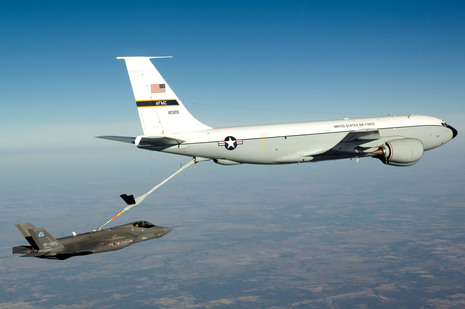
08:00 GMT, February 4, 2010 EL SEGUNDO, Calif. | Wyle air crew personnel have become the first aviators to aerially refuel the F-35B short takeoff/vertical landing variant (STOVL) of the Joint Strike Fighter (JSF) using a probe-and-drogue refueling system during a recent mission at Lockheed Martin's Ft. Worth, Tex. manufacturing facility.
These first aerial refueling missions were performed by Wyle aircrew flying a Navy KC-130 tanker aircraft assigned to the U.S. Navy's Air Test and Evaluation Squadron Twenty (VX-20) at Naval Air Station Patuxent River, Md. The refueled aircraft, designated the F-35BF-2, represents one of three variants of this fifth generation strike fighter, developed for the U.S. military and eight allied nations.
Two of the first five F-35B aircraft slated for flight testing arrived at Patuxent River in the last quarter of 2009 and Wyle's KC-130 aircrew team will continue to assist with refueling missions as testing progresses.
Wyle has the largest independent flight test team in the world with more than 70 members, including 53 pilots, flying 20-plus types of aircraft from supersonic manned jets to helicopters to unmanned flight systems. Among the aircraft flown by Wyle pilots are the F/A-18, V-22, E-2D, P-3, KC-130 and AH-64D.
For the refueling mission, Wyle's crew included Steve Angay, Craig Homer, Josh Izenour, Jeff Kosich, Chris Loftis, and Bill Smith who support VX-20.
The probe-and-drogue system is used by the U.S. Navy, Marine Corps and many NATO nations to refuel aircraft in flight. The system uses a flexible hose that terminates in a cone shaped basket extending from an aircraft carrying fuel. The cone shaped basket, or drogue, connects to the probe of an aircraft needing fuel. The fuel is then transferred through the hose from the tanker to the receiving aircraft.
An alternate system, called a flying boom, is used by the U.S. Air Force. This system inserts a rigid flying boom into a receptacle on a receiving aircraft. This is the system employed by the F-35A conventional takeoff and landing (CTOL) variant of the aircraft, which was the first variant to be aerially refueled.
In preparing to go to Fort Worth, the Wyle KC-130 aircrew worked with the JSF team to develop test plans, determine aircraft configurations representative of the U.S. Navy and Marine Corps fleet, and make modifications to the tanker.
"A lot of the initial planning was done by our crew," said Izenour, Wyle's KC-130 mission commander. "These guys did an excellent job of mission planning and interfacing with the JSF team which made the actual mission itself -- the flying part -- go seamlessly. The amount of planning that everyone did on the front side made the execution very, very easy."
The team planned for variables inherent in the initial test evolutions, where fuel was uploaded into the aircraft at 10,000, 15,000 and 20,000 feet, at speeds ranging from 200 to 250 knots.
"Since it was the first refuel, we didn't know exactly how the aircraft [JSF] might behave, so we were limited as to how much pressure we could provide to the fuel lines," said Homer. "From an engineering point of view, we had to keep very close track of the [refueling] panel during the tests."
|
www.defpro.com | |
|   | | MAATAWI
Modérateur


messages : 14756
Inscrit le : 07/09/2009
Localisation : Maroc
Nationalité : 
Médailles de mérite :
 
 
 
 |  Sujet: Re: JSF F-35 Lightning II Sujet: Re: JSF F-35 Lightning II  Mer 17 Fév 2010 - 11:46 Mer 17 Fév 2010 - 11:46 | |
| Les responsables du pantagone ont confirmé que Le F-35 Joint Strike Fighter (JSF) sera retardé d'environ un an - Citation :
Pentagon Official Confirms 1-Year Delay For JSF
By JOHN REED
Published: 16 Feb 2010 16:10
Pentagon officials on Feb. 16 confirmed Deputy Defense Secretary Bill Lynn's announcement one day prior that the F-35 Joint Strike Fighter (JSF) program will be delayed by about one year. The Pentagon confirmed delay of the F-35, shown above, one day after a noteworthy speech in Australia by its No. 2 official. (CHERIE CULLEN / U.S. DEPARTMENT OF DEFENSE) The Pentagon confirmed delay of the F-35, shown above, one day after a noteworthy speech in Australia by its No. 2 official. (CHERIE CULLEN / U.S. DEPARTMENT OF DEFENSE)
The Pentagon's No. 2 official said this week that the jet's development schedule would slip between 12 months and 13 months despite an aggressive restructuring of the program that was announced earlier this month.Related Topics
"The development was originally projected to last an additional 30 months; we think with the additional test aircraft it will be closer to a delay of about 12 or 13 months, but I can't give you the cost numbers," The Australian newspaper quoted Lynn as saying during a speech at a shipyard in South Australia. He did not say if this would affect the delivery timeline for the JSF.
The delay is due to the integration of additional test aircraft that were mandated under the restructuring, which also extended system development and design (SDD) until 2015, according to a Pentagon official.
"That is a true statement, the driver on this is the test aircraft," the official said Feb. 16. "The driver on this whole thing, about a year, is due to the additional test aircraft."
Like Lynn, the official would not comment on how this will affect the delivery schedule for the plane. The U.S. Marine Corps is set to get its first F-35s in 2012, with the U.S. Air Force and the U.S. Navy scheduled to receive their jets in 2013 and 2014, respectively.
On Feb. 1, Steve O'Bryan, Lockheed's vice president for F-35 business development, told reporters that while the jet's flight tests are roughly six months behind schedule, the company will deliver the plane in time to meet the Marines' initial operating capability date of 2012.
"I think you'll see that we're going to deliver all the SDD jets by the end of this year and get them in flight test," O'Bryan said.
Under the Pentagon's restructuring that was announced Feb. 1, Defense Secretary Robert Gates ordered an additional test jet and $2.8 billion be put into the extended F-35 SDD, withheld more than $600 million in performance fees from Lockheed, cut planes from F-35 acquisition coffers and fired Marine Corps Maj. Gen. David Heinz, the Pentagon's F-35 program manager.
The Defense Department is requesting $10.7 billion in its 2011 budget to continue development on the F-35 and purchase 43 of the planes. defensenews | |
|   | | MAATAWI
Modérateur


messages : 14756
Inscrit le : 07/09/2009
Localisation : Maroc
Nationalité : 
Médailles de mérite :
 
 
 
 |  Sujet: Re: JSF F-35 Lightning II Sujet: Re: JSF F-35 Lightning II  Sam 20 Fév 2010 - 13:15 Sam 20 Fév 2010 - 13:15 | |
| - Citation :
F-35 B : Le troisième prototype a réalisé son premier vol

Prototype du F-35 B
crédits : LOCKHEED-MARTIN
|
19/02/2010
Le troisième prototype de l'avion à décollage court et appontage vertical F-35 B a réalisé son premier vol début février. En tout, Lockheed-Martin et ses partenaires comptent utiliser 13 prototypes afin de mener à bien les essais sur les différentes versions de l'appareil : F-35 A pour les armées de l'air, F-35 B pour les porte-aéronefs et porte-hélicoptères d'assaut et F-35 C conçu pour être catapulté depuis porte-avions. Les forces armées américaines utiliseront les trois modèles, dont le F-35 A pour l'US Navy et le F-35 B pour l'US Marine Corps. Le plan initial prévoit l'acquisition de 230 avions pour la première et 450 pour le second.
Outre les Etats-Unis, les marines anglaise, italienne et espagnoles souhaitent acquérir le F-35 B afin de remplacer les Harrier actuellement en service. MERETMARINE | |
|   | | rafi
General de Division

messages : 9496
Inscrit le : 23/09/2007
Localisation : le monde
Nationalité : 
Médailles de mérite :  
 
 

 |  Sujet: Re: JSF F-35 Lightning II Sujet: Re: JSF F-35 Lightning II  Sam 27 Fév 2010 - 12:16 Sam 27 Fév 2010 - 12:16 | |
| |
|
|
|

